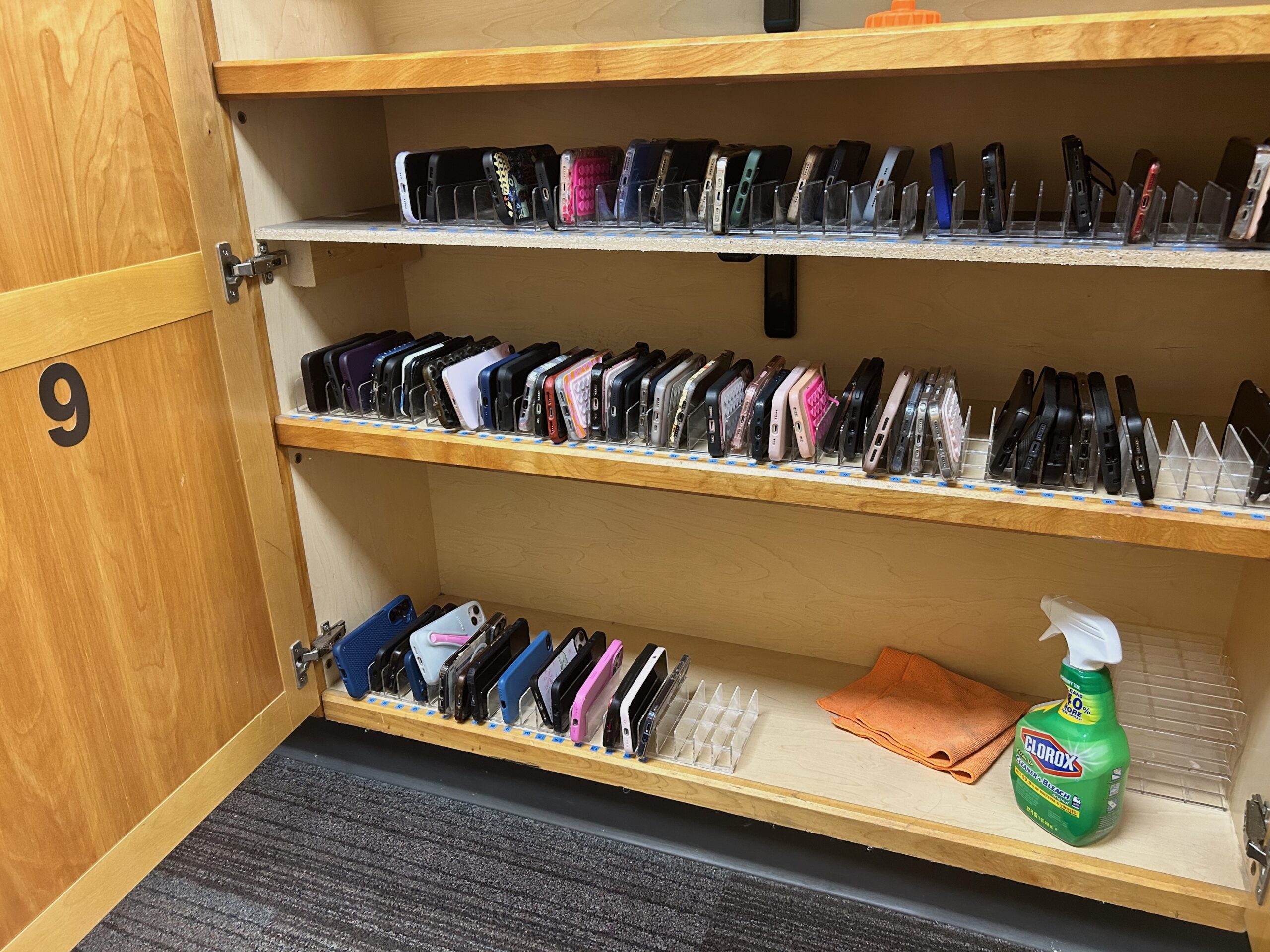(Izu N./Staff)
As the 8:05 bell rings, the hum of student chatter replaces buzzing notifications as 388 cell phones are safely tucked away until 3:20 p.m. A new Ohio law requires each school district, community school, and STEM school to adopt a policy prohibiting cell phone use by students during the instructional day starting on January 1, 2026. But Academy already had a jump on this act.
Our first phone ban was instituted in 2023. Students were allowed to keep their phones in their bags, as long as they didn’t use them during the day. Unfortunately, many students disobeyed this rule, putting their phones in pockets and using them during the day. This year, the administration devised a way to reduce distractions, improve learning and keep phones out of student hands by using “cell slots.”
The cell cart, though not everyone may agree, has been a success. Even when phones sit silent, their presence can affect our focus. A 2023 study by Rutgers found that just having a smartphone on the desk, even when turned off, reduced performance on tasks requiring concentration. In classroom settings, the costs show up on tests: Rutgers researchers reported that students allowed to use devices scored about 5 percent lower on exams (roughly half a letter grade). A meta-analysis of 27 experiments reached the same conclusion: phones hurt the retention and recall of information. And it’s not just data. 72 percent of U.S. high school teachers say phone distraction is a “major problem.”
Outside school, heavy phone use can affect health and mood. Late-night scrolling causes poorer sleep, higher stress, and depressive symptoms. Social media adds another layer. Researchers connect constant comparison online to lower self-esteem and greater loneliness among teens. Still, phones aren’t all bad. They provide safety, quick communication, and access to learning apps. The debate is less about banning technology outright and more about finding balance.
Considering this research, our administration believed cell slots would lower the problem. And the progress is visible. Teachers are noticing that students are more focused in and out of class without the distraction of phones.
Reactions to the new cell slots have been mixed. Some students see clear benefits: “I like it and it’s less of a distraction during class,” said sophomore Gabi M. “I think I’m understanding the lessons better without having to worry about whose phone is buzzing.” Others remain skeptical. Freshman Chichi N. said the start was frustrating at first: “In the beginning of the year it was terrible because when everyone had to put their phone in the same area it was very congested and I was not a fan. It’s better now that they’re all spread out by grade.” Faculty, meanwhile, emphasize the purpose behind the policy. “Ultimately, we want our kids engaged and want them focused on what it is that’s going on around them,” saids Dean Thompson.
Instead of grumbling about the policy, think of all the benefits that one small action can deliver. With cell phones often blamed for classroom distractions and stress, the cell phone rule establishes a balance between discipline and student independence, making Academy a more productive environment for students to flourish.








